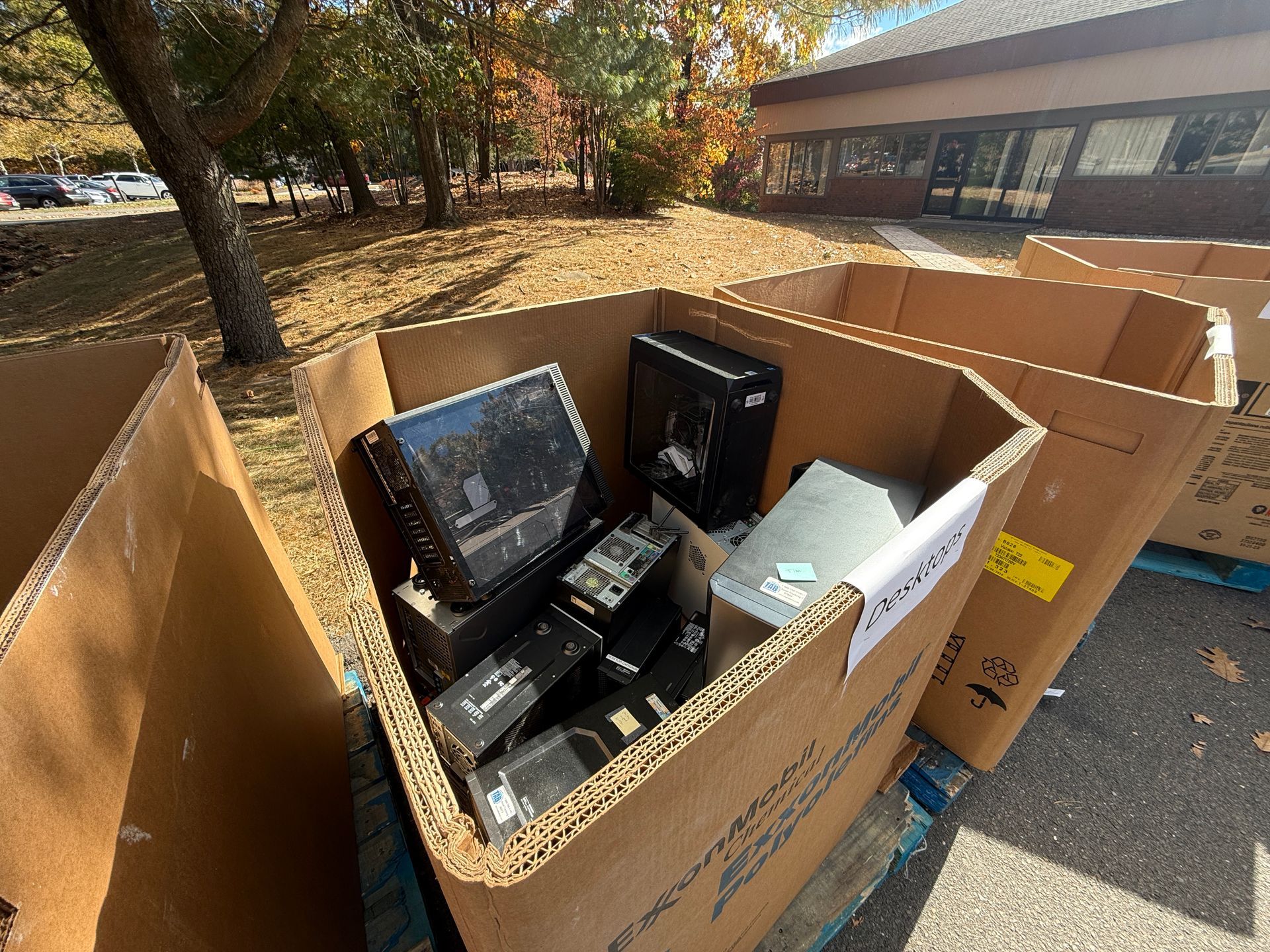Remote Managed IT Services: A Solution For Today's Digital Challenges
In the ever-evolving landscape of the modern business world, the way we work has undergone a seismic shift. The traditional office setup is gradually giving way to a more flexible, remote work model. This transformation, while offering unprecedented flexibility, also brings forth a new set of challenges, particularly in the realm of Information Technology (IT). In this blog, we explore the rise of remote work, the growing significance of managed IT services, and how embracing Remote Managed IT Services can be a strategic solution for today's digital challenges.
The past few years have witnessed a significant paradigm shift in how businesses operate. Remote work has transitioned from a novel concept to an integral part of the corporate fabric. The benefits of flexibility and access to a broader talent pool are undeniable, but this shift also poses unique IT challenges that need to be addressed.
As businesses navigate the complexities of a remote work environment, the role of
remote-managed services
has become more pronounced. Traditional IT support models are no longer sufficient to meet the demands of a dispersed workforce. Managed IT services, particularly those designed for remote environments, offer a proactive and holistic approach to address the evolving digital landscape.
Understanding Remote Managed IT Services
Remote Managed IT Services involve the outsourcing of IT management responsibilities to a third-party provider. This encompasses a wide array of services, including network monitoring, security, software updates, and technical support. The focus is on proactive measures to prevent issues before they impact the user experience.
The advantages of adopting remote managed IT services are manifold. Businesses benefit from enhanced security, reduced downtime, and a more efficient IT infrastructure. Remote management allows for real-time monitoring, rapid issue resolution, and a scalable approach to IT support.
III. Key Features of Remote Managed IT Services
- Network Monitoring And Security:
Remote IT management involves continuous monitoring of a company's network. This proactive approach enables the identification of potential security threats and vulnerabilities, allowing for swift action to mitigate risks. Robust security protocols are implemented to safeguard sensitive data and ensure compliance with industry regulations.
- Software Updates And Patch Management:
In a remote work environment, ensuring that all software is up-to-date is crucial for both security and performance. Managed IT services handle software updates and patch management systematically, reducing the risk of security breaches and optimizing the functionality of essential applications.
- Helpdesk And Technical Support:
A responsive helpdesk and technical support system are integral components of remote IT management. This ensures that employees have access to timely assistance for technical issues, fostering a seamless remote work experience. A dedicated support team addresses concerns promptly, enhancing overall user satisfaction.
Implementation Process
Embracing remote-managed IT services involves a well-planned and phased implementation process to ensure a seamless transition that aligns with your business objectives. The following steps outline a strategic approach to making this transformation:
- Assessment of Current IT Infrastructure:
- Begin with a comprehensive assessment of your existing IT infrastructure. This involves evaluating hardware, software, network configurations, and security protocols. Identifying strengths and weaknesses provides a baseline for crafting a tailored remote-managed IT services plan.
- Define Business Objectives And Requirements:
- Clearly articulate your business objectives and the specific IT requirements to achieve them. Whether it's enhancing security measures, optimizing network performance, or ensuring remote workforce productivity, a precise understanding of your goals informs the development of a customized remote IT management plan.
- Selection of A Remote-Managed IT Services Provider:
- Carefully choose a remote-managed IT services provider that aligns with your business needs. Consider factors such as expertise, experience, service offerings, and the provider's ability to scale with your business. A collaborative and communicative relationship with the chosen provider is essential for the success of the transition.
- Customization of IT Support Plan:
- Work closely with the chosen provider to develop a customized IT support plan. This plan should address the specific challenges identified during the assessment phase. Key elements include network monitoring, security protocols, software updates, and responsive helpdesk support. Tailoring the plan ensures that it aligns with the unique requirements of your business.
- Employee Training And Onboarding:
- Facilitate training sessions for your employees to familiarize them with the new IT support protocols and tools. Clear communication on how to access technical support, report issues, and adhere to security guidelines is vital. A well-informed workforce contributes to the smooth operation of remote-managed IT services.
- Integration With Existing Workflows:
- Ensure that the implementation of remote-managed IT services integrates seamlessly with your existing workflows. Minimize disruptions by planning for a phased transition, with considerations for peak operational periods. A well-integrated system enhances user experience and minimizes downtime during the transition.
- Testing And Quality Assurance:
- Conduct rigorous testing of the implemented remote IT management system before full deployment. This includes assessing network responsiveness, security measures, and the efficiency of support processes. A thorough quality assurance phase ensures that the new system meets performance expectations and is aligned with business objectives.
- Feedback Collection And Iterative Improvements:
- Encourage feedback from employees and key stakeholders throughout the initial stages of implementation. This feedback loop allows for the identification of any issues or areas for improvement. Implement iterative changes based on feedback to optimize the remote-managed IT services continuously.
- Data Migration And Security Measures:
- If applicable, ensure the secure migration of data to the new remote IT management system. Implement robust security measures to safeguard sensitive information during the transition. This step is critical to maintaining data integrity and preventing potential cybersecurity threats.
- Documentation And Knowledge Transfer:
- Create comprehensive documentation outlining the new IT support processes, security measures, and contact information for technical support. Facilitate knowledge transfer sessions to key personnel, ensuring that there is a clear understanding of the remote-managed IT services system and its functionalities.
- Continuous Monitoring And Support:
- Once fully implemented, establish a continuous monitoring system to track the performance of the remote-managed IT services. Proactive monitoring allows for the identification of potential issues before they escalate. Ensure that support channels remain responsive to address any emerging concerns promptly.
While the benefits of remote managed IT services are substantial, challenges may arise during the implementation phase. Common issues such as connectivity issues, user training, and security concerns can be effectively addressed through a proactive and collaborative approach between the business and the managed IT services provider.
Future-Proofing Your Business
The digital landscape is dynamic, with new challenges emerging regularly. Remote managed IT services provide a proactive framework for adapting to these challenges. The continuous monitoring and strategic approach to IT management ensure that businesses stay ahead of potential issues and leverage the latest technologies for sustained growth.
One of the defining features of remote managed IT services is scalability. As businesses evolve and grow, the IT infrastructure can seamlessly scale to accommodate changing needs. This flexibility is particularly crucial in a remote work setting where the demand for IT resources may vary.
Conclusion
As businesses navigate the complexities of the digital era, remote managed IT services emerge as a beacon of proactive and strategic IT management. The ability to address challenges before they impact operations, coupled with the flexibility to scale with business growth, positions remote managed IT services as a linchpin in the future of business.
In the realm of remote managed IT services, The Walker Group stands out as a trusted partner committed to the success of businesses in this digital age. With a proven track record of providing customized solutions, proactive IT management, and a focus on scalability, The Walker Group invites businesses to explore the benefits of embracing remote managed IT services.
Investing in a proactive IT strategy is an investment in the resilience and growth of your business. Consider The Walker Group as your strategic ally in navigating the digital landscape, ensuring that your IT infrastructure not only meets the challenges of today but is also poised for the opportunities of tomorrow. Explore the transformative potential of remote managed IT services with The Walker Group today.
WE ARE PROUD TO BE
More Recent News







